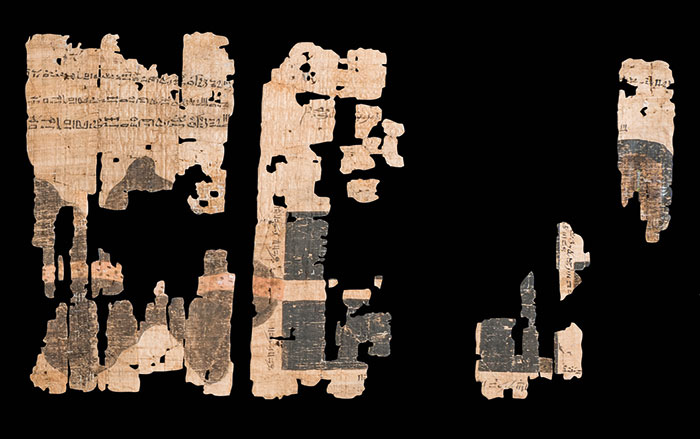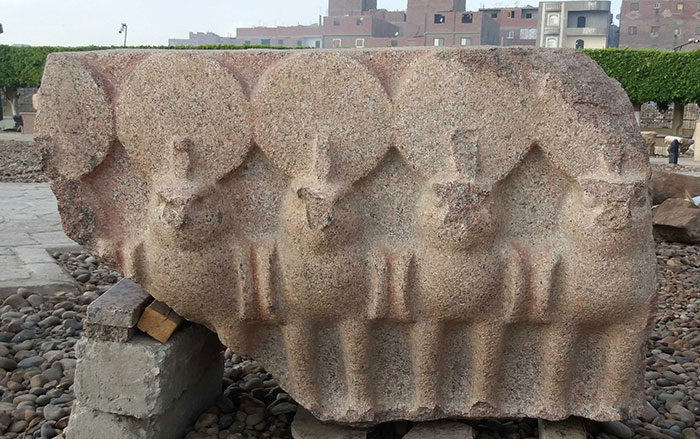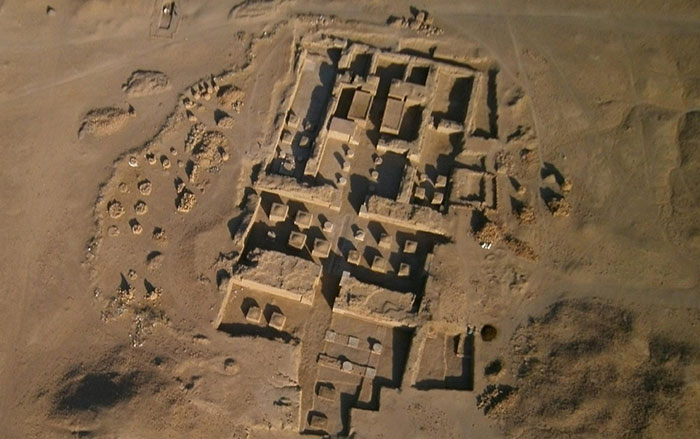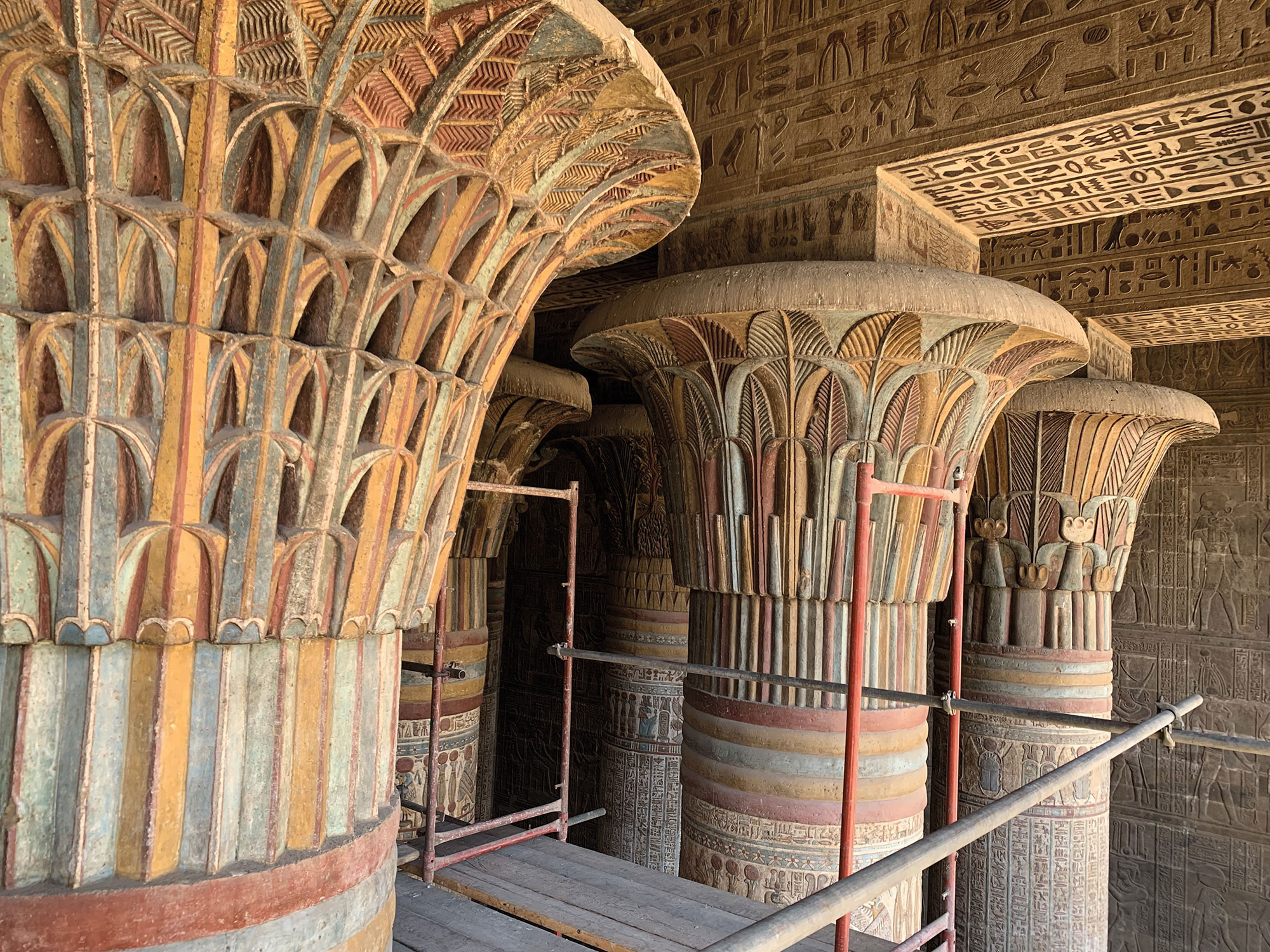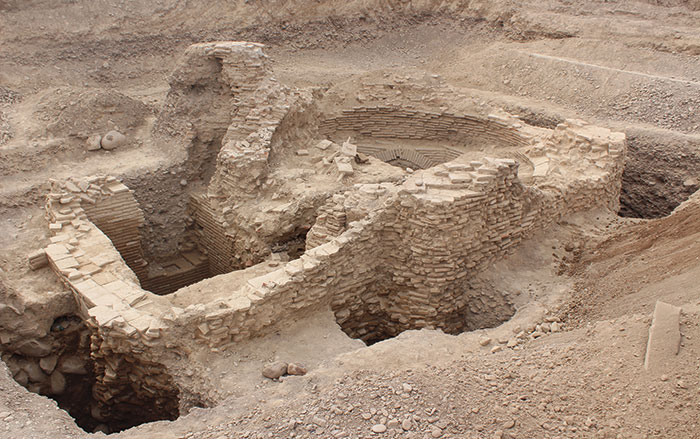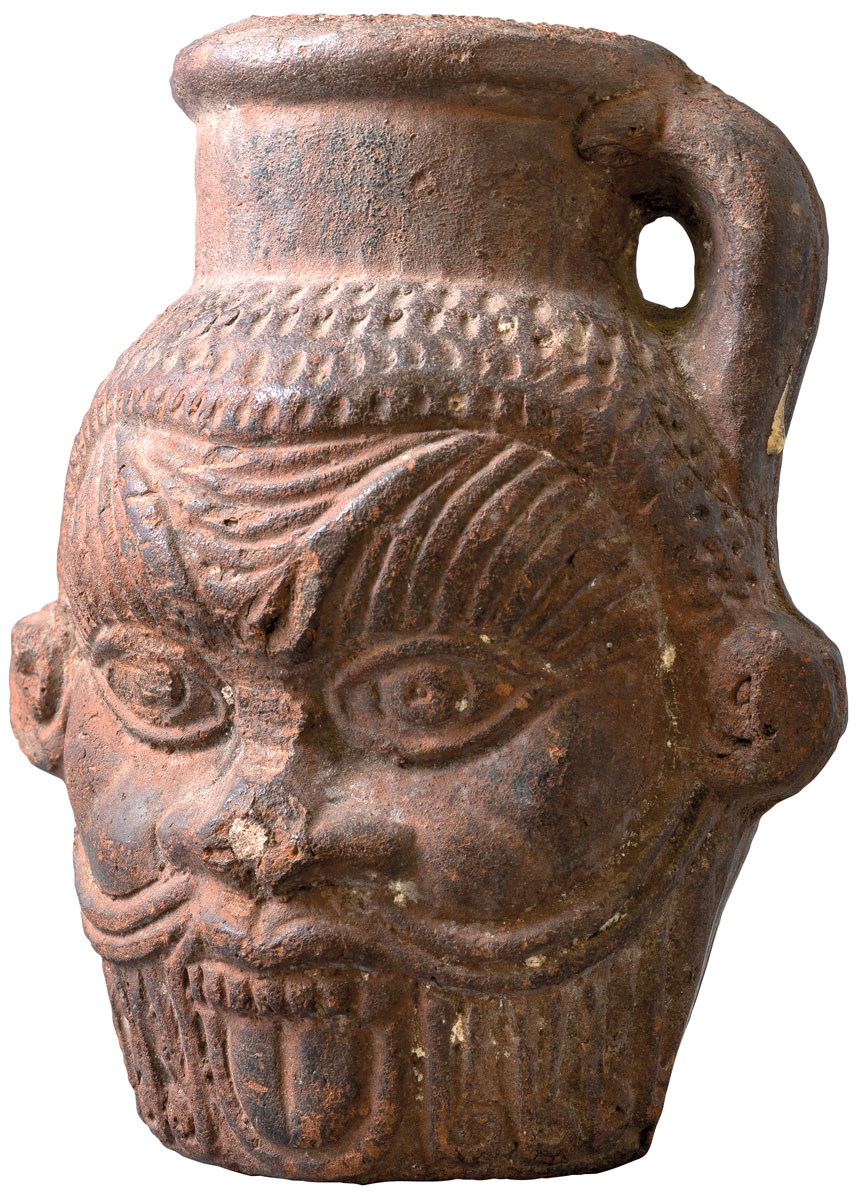
What is it?
Bes cup
Material
Ceramic
Culture
Egyptian
Date
Second century b.c.
Dimensions
1.5 inches tall
Found
Fayum Oasis, Egypt
It is tempting to think that the ancient Egyptians only considered the gods when their thoughts turned toward death. Many of the most spectacular objects they created, the hieroglyph-covered walls they painted, and the ways in which they preserved the bodies of the deceased were intended to ensure that the gods would grant the dead an easy passage to the afterlife and that they would have all they needed there. But the popular dwarf god Bes was a different type of deity. Among his many functions, he was a protector of homes, mothers, children, childbirth, life, and joy. From the New Kingdom (ca. 1550–1070 b.c.) through the Ptolemaic and Roman periods—a span of more than 2,000 years—ceramic vessels in the shape of Bes’ head circulated throughout Egypt. Now, for the first time, archaeologists have pinpointed what was inside at least one of these pots, and it proves to have been an intoxicating brew. “When we analyzed the mug’s contents, we were able to identify all the chemical signatures of the diverse components of a liquid concoction that was used for an otherwise unknown ritual practice,” says archaeological scientist Davide Tanasi of the University of South Florida.

Tanasi detected a number of plants with psychotropic and medicinal properties, including wild Syrian rue, blue water lily, and African spider plant. He also discovered that the mug contained bodily fluids such as breast milk, as well as a mixture of beer, wine, honey, sesame seeds, pine nuts, and licorice. “I thought there was just going to be residue of beer or milk, so I was very surprised by the complexity of the vessel’s contents,” Tanasi says. “But if you can imagine a civilization that is capable of doing this kind of magical religious stuff, it’s the ancient Egyptians.”




